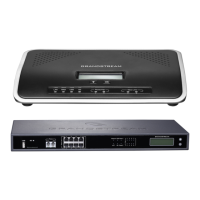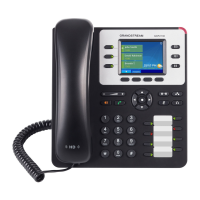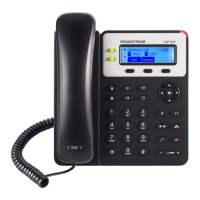UCM6200 Series User Manual
to use this password for security purpose.
Use Extension as Password.
Enter a password to be used on all the extensions in the batch.
Configure CallerID Number when adding Batch Extensions.
Use Extension as Number
Users can choose to use the extension number as CallerID
Use as Number
Users can choose to set a specific number instead of using the extension
number as CallerID.
Configure the number of seconds to ring the user before the call is forwarded to
voicemail (voicemail is enabled) or hang up (voicemail is disabled). If not specified,
the default ring timeout is 60 seconds on the UCM6200, which can be configured in
the global ring timeout setting under web GUI->Internal Options->IVR Prompt:
General Preference. The valid range is between 5 seconds and 600 seconds.
Note:
If the end point also has a ring timeout configured, the actual ring timeout used is the
shortest time set by either device.
Enable automatic recording for the calls using this extension. The default setting is
disabled. The recording files can be accessed under web GUI->CDR->Recording
Files.
Skip Voicemail
Password
Verification
When user dials voicemail code, the password verification IVR is skipped. If enabled,
this would allow one-button voicemail access. By default this option is disabled.
Select which Music On Hold class to suggest to extensions when putting them on
hold.
If enabled, the batch added extensions will be added to LDAP Phonebook PBX list; if
disabled, the batch added extensions will be skipped when creating LDAP
Phonebook.
If enabled, extensions will be able to login to user portal and use Web RTC features.
Configure the maximum duration of call-blocking.
Use NAT when the PBX is on a public IP communicating with devices hidden behind
NAT (e.g., broadband router). If there is one-way audio issue, usually it's related to
NAT configuration or Firewall's support of SIP and RTP ports. The default setting is
enabled.
By default, the PBX will route the media steams from SIP endpoints through itself. If
enabled, the PBX will attempt to negotiate with the endpoints to route the media
stream directly. It is not always possible for the PBX to negotiate endpoint-to-endpoint
